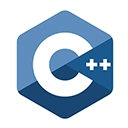The C++ Standard Library provides a rich set of data structures and algorithms that simplify the implementation of various data structures. In this guide, we'll explore some of the commonly used data structures provided by the C++ Standard Library, along with sample code and explanations.
1. Vectors
A vector is a dynamic array that can grow in size as needed. It is part of the Standard Library's sequence container. Here's how you can use vectors in C++:
#include <iostream>
#include <vector>
int main() {
std::vector<int> myVector; // Add elements to the vector
myVector.push_back(1);
myVector.push_back(2);
myVector.push_back(3);
// Access elements
std::cout << "Vector Elements:" << std::endl;
for (int element : myVector) {
std::cout << element << " ";
}
std::cout << std::endl;
return 0;
}
2. Maps
A map is an associative container that stores key-value pairs. It allows for efficient lookup based on keys. Here's an example of using maps in C++:
#include <iostream>
#include <map>
#include <string>
int main() {
std::map<std::string, int> myMap; // Add key-value pairs to the map
myMap["Alice"] = 25;
myMap["Bob"] = 30;
myMap["Charlie"] = 28;
// Access values by key
std::cout << "Age of Bob: " << myMap["Bob"] << std::endl;
return 0;
}
3. Sets
A set is an associative container that stores unique values. It is useful for maintaining collections of unique elements. Here's an example of using sets in C++:
#include <iostream>
#include <set>
int main() {
std::set<int> mySet; // Add elements to the set
mySet.insert(3);
mySet.insert(1);
mySet.insert(2);
// Access elements (they are automatically sorted)
std::cout << "Set Elements:" << std::endl;
for (int element : mySet) {
std::cout << element << " ";
}
std::cout << std::endl;
return 0;
}
4. Queues and Stacks
The Standard Library provides queue and stack containers. They are often used for implementing queues and stacks in C++:
#include <iostream>
#include <queue>
#include <stack>
int main() {
std::queue<int> myQueue;
std::stack<int> myStack;
// Queue operations
myQueue.push(1);
myQueue.push(2);
int frontElement = myQueue.front();
myQueue.pop();
// Stack operations
myStack.push(1);
myStack.push(2);
int topElement = myStack.top();
myStack.pop();
return 0;
}
5. Conclusion
The C++ Standard Library provides a powerful set of data structures and algorithms that can simplify your programming tasks. By using vectors, maps, sets, queues, and stacks, you can efficiently manage and manipulate data in your C++ programs.

